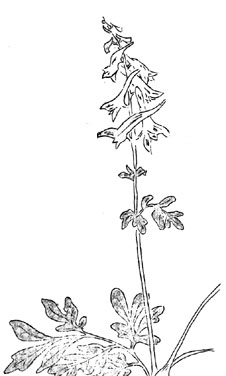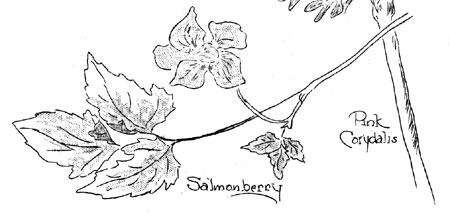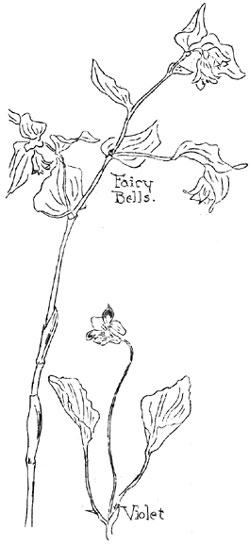|
MOUNT RAINIER NATURE NOTES
|
| Vol. X |
June - 1932 |
No. 6 |

The flowers of the sub-alpine meadows have been well publicized. But
little of the floral beauty of the lower wooded slopes have become
generally known. Yet it is true that the plants of these localities are
as interesting as the more widely known glories of the sub-alpine
regions at the height of color and diversity in July and August.
Short walks along the trails in the vicinity of the Nisqually
Entrance reveals the beautiful Lady Slipper (Calypso bulbosa) which is
the most interesting member of the orchid family native to the park.
This plant alone makes worth while a few moments pause at the entrance
before continuing on to Longmire and Paradise. Open patches on the
forest floor beneath the great firs, hemlocks and cedars which add so
much beauty to the park's lower elevations are clothed with masses of
Wood Sorrell (Oxalis oregona). The foliage of this plant so closely
resembled that of clover that, unless one is aware of the similarity, it
will often be mistaken for the clover. But the flowers quickly reveal
it as not being remotely related with that more common plant. The Pink
Corydalis (Corydalis scouleri), by its foliage gives evidence of its
relationship with the familiar Bleeding Heart. It is a tall plant,
growing upon succulent stems and one characteristic of the densely
shaded forests. Salmonberry (Rubus spectabilis) is also common in
places at this time - even, in some cases, having its fruit well along
toward the way of maturity.
|

|

|

One clump of Fairy Bells (Disporum oregonum) was found near the west
side highway growing upon a sunny slope just a few feet removed from a
deep snow drift. And, of course, another member of the Lily Family (for
the Fairy Bells has such connections) the Trillium, is very abundant
everywhere. Violets - both the yellow variety as represented by Viola
glabella - and the Blue (Viola adunca) are very numerous and line the
highway from the park entrance to Longmire as well as add considerable
interest and color to the trails. Sweet-after-death or Vanilla Leaf
(Achlys triphylla) is in general not flowering as yet but its
characteristic foliage is attractive and a prompter of many questions
regarding the plant's identity. Star Flower (Trientalis latifolia) is
also found in abundance and the Forest or Woods Anemone (Anemone
deltoidea) also bids for the botanist's interest. Huckleberry
(Vaccinium ovatifolium), several species of Currant and many others are
now in bloom -- in fact the flower display, a regular feature at all
central points within the park, at Longmire was recently established for
the season with nearly thirty species as a start.
(C.F.B.)
Click to see a copy of the pages
of the original article (~157K)
|

